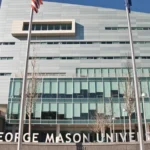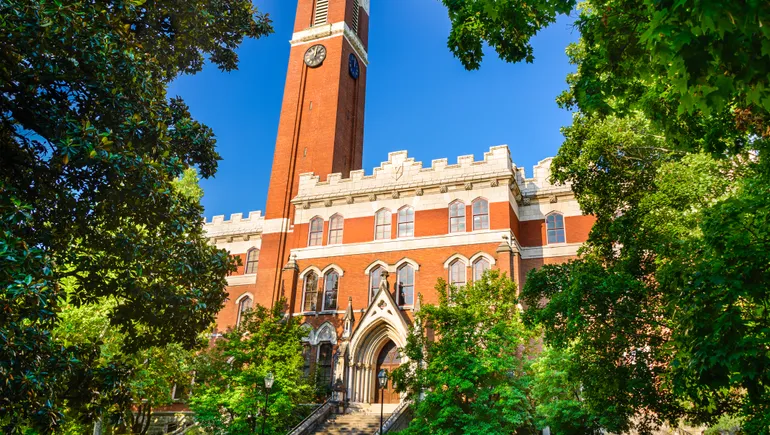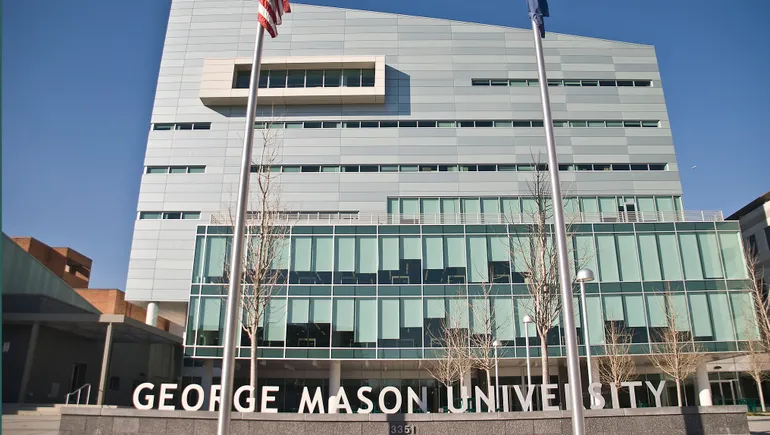This spring, the price of college rode the news cycle again as headlines featured an eye-popping $100,000 in attendance costs at Vanderbilt University.
The biggest share of that figure is Vanderbilt’s tuition price, which federal data puts at a hair under $64,000 for the just-ended academic year. That price is up in the stratosphere with the most expensive institutions, such as Columbia University, with its $69,045 tuition for 2023-24.
But as many higher ed insiders and observers know well, those tuition figures are incomplete at best, misinformative at worst. The majority of students, especially in the private nonprofit world, receive substantial tuition discounts through various forms of institutional aid. That makes prices complicated, to say the least.
“It’s one of the few sectors where what you pay isn’t what it costs, and then what it costs isn’t what you’re charged,” Fitch Ratings Senior Director Emily Wadhwani said. “It’s sort of opaque.”
The practice of marking down tuition sticker prices is decades old and comes with few benefits at this point, many experts say. It can mislead students and muddy the conversation around the value of a college education, while for institutions tuition discounting can wear on revenue and finances in a competitive environment.
“It’s not good for anybody. It’s not good for the students. And it’s not good for the institutions,” said Phillip Levine, an economics professor at Wellesley College, in Massachusetts, and author of the book “A Problem of Fit: How the Complexity of College Pricing Hurts Students — and Universities.”
“If you interviewed university leaders and institutions that are doing this, they will tell you it doesn’t make sense,” Levine added. “But there’s no way to get out of it.”
‘Ignore the sticker price’
While rising sticker prices grab headlines, net tuition — or the cost of tuition and fees after deducting grants and scholarships — is under pressure amid heavy competition for students in the higher ed world.
According to Fitch’s Wadhwani, colleges rated by the agency raised net tuition and fees by 1.1% on average in fiscal 2023.
That represents modest growth as expenses continue rising for colleges — and is not enough to preserve margins, Fitch said in July. The ratings agency expects growth to remain around 2% to 2.5%, or lower, annually.
A recent study from the National Association of College and University Business Officers found that net tuition and fee revenue per first-time, full-time undergraduates in the 2023-24 academic year rose on average by just 0.5% at four-year private nonprofit colleges.
But, after adjusting for inflation, that revenue actually declined by 1%. And that followed a “historic” 5.4% drop in inflation-adjusted revenue between the 2020-21 and 2021-22 academic years, according to NACUBO.
At the same time, tuition discounting among private nonprofits hit a new high of 56.1% in 2023-24.
A decade of mostly falling tuition revenue
Change in net tuition revenue at private nonprofits over the past decade, adjusted for inflation
Those are only averages. Net tuition costs for students and their families depend heavily on their economic backgrounds. As family income levels rise, so do net tuition costs, as many colleges provide need-based aid to help diversify their student bodies.
For a family with an annual income of $50,000, net tuition at private colleges rose 23.6% to $24,600 between the 1995-96 academic year and 2019-20 after adjusting for inflation, according to recent research by Levine. For those families, the difference between sticker and actual costs in 2019-20 was $46,300.
For a family with $250,000 in annual income, net tuition at private colleges increased 42.6% to $52,900 between 1995-96 and 2019-20. And while higher-income families paid closer to the sticker price, they still saw an $18,000 gap between sticker and net price in 2019-20, according to Levine’s analysis.
That disparity has in fact widened over time. In 1995-96, the gap was just $2,500.
Discounting is much heavier at private colleges, which are free to raise tuition as high as the market will bear, unlike many public institutions that are bound by state boards. However, discounting often occurs at public institutions as well. In 2019-20, the gap between sticker and actual costs hit $15,100 for lower-income students at public colleges and $3,900 for families making $250,000.
Even with efforts to tailor pricing to need, lower-income families still face rising college costs.
“The number that bothers me the most is the increasing costs for the low-income kids,” Levine said. “If you’re making $50,000 or under, you still have to come up with almost $20,000, which is essentially impossible.”
Competitive markets, complicated pricing
Overall, given the gap and what different families pay, Levine calls it a “huge disservice” on the part of the consumer media to report “every time that school X raises their tuition from $80,000 to $90,000” and say, in effect, “‘Look how expensive college is!’”
He added: “Ignore the sticker price. It is a meaningless number. It tells you nothing.”
Those degrees of difference between sticker and net price add a layer of complexity for both students and colleges.
“Ignore the sticker price. It is a meaningless number. It tells you nothing.”

Phillip Levine
Professor, Wellesley College
As Lucie Lapovsky, principal of Lapovsky Consulting, explains, boards typically set the tuition price — but control over the net price can be indirect as colleges adapt to market pressures.
“Schools which are giving out a lot of merit [aid], they are playing in a very competitive market,” Lapovsky said. “A school wants a certain amount of students at a certain academic level or a certain set of criteria, and they want a certain net tuition. Unfortunately, it is very hard to control all of those variables or even many of them.”
Trying to tailor aid — and hence price — takes complicated statistical crunching. Often colleges turn to outside firms that can build what’s called a leveraging matrix for admissions offices.
“That tells you that a student with XYZ characteristics is likely to enroll at 10%, 20%, 30% [probability] if you give them X dollars” in aid, Lapovsky said.
Stacey Linderman, a consultant who works with the National Association of College and University Business Officers, noted that all of these calculations and considerations are highly specific to the institution. Pricing depends on their region, their competitors, their aspirations and, not least of all, their job placement rates for graduates, among other factors.
“It is very complex for some, and it’s individualized for some institutions,” Linderman said. She added that for some colleges, the current pricing system is working for the individual goals they’re trying to achieve.
What such calculations can’t do is tell colleges with certainty if students will actually accept admissions offers. That is where all the careful efforts to tailor prices, set net tuition levels and plan for an institution’s financial life can break down.
As Lapovsky noted, after the aid offers and acceptance letters go out to students, a college’s prospective student body for the upcoming year could fall short of targets.
“Many schools are forced to increase their awards,” Lapovsky said. “Parents come back and negotiate and say, ‘School X gave me this, you only gave me that.’ Or [colleges] just aren’t getting enough deposits.”
Colleges in those situations find themselves in a trade-off between boosting enrollment by discounting more and facing lower net tuition per student.
Competition leads institutions “to be pretty aggressive with their pricing,” Levine said, expressing one of the fundamental attributes of a market.
Discounting tuition and fees to draw in students can of course create both fiscal and opportunity costs for colleges. The majority of institutional aid comes from undedicated funds such as general funds, unplanned contributions, foregone revenue and other sources, according to NACUBO. And roughly 30% of institutional aid is covered by colleges’ financial reserves.
A ‘psychological strategy’
A growing gap between net tuition and sticker price begs the question: What’s even the point of the sticker price?
Among experts Higher Ed Dive spoke with, the most common answer is simple: Marketing.
“It’s deliberate. It has everything to do with the perception of value,” Fitch’s Wadhwani said. “There are exceptions to this, but every parent would rather say, ‘My kid got a $40,000 scholarship to an $80,000 school” than just pay the $40,000.”
She added, “There is a philosophical and psychological strategy at play — and that’s really hard to unwind.”
Others offered similar explanations.
“A high price signals something — it signals quality,” Levine said. “People are thinking, ‘Wow, this great school is charging a lot, and they love me because they’re giving me this $10,000 grant.’ And that’s really effective.”
“It’s deliberate. It has everything to do with the perception of value.”

Emily Wadhwani
Fitch Ratings, senior director
James Dean Ward, principal of policy and economic research at nonprofit Ithaka S+R, described this as the “Chivas Regal effect” and said this psychology is “a huge benefit of discounting on the back end” for colleges.
“Research shows that when students receive a presidential scholarship or a provost scholarship, it makes them feel happy and excited,” Ward said. “And that can be an important tool for enrollment managers to use to entice these students to accept their offer of admission.”
At the same time, high sticker prices run the risk of turning off some students from applying in the first place.
“Higher sticker prices can have a different effect on different groups of students,” Ward said. “It may induce sticker shock amongst lower-income students.”
‘Resets are not going to be a silver bullet’
Convoluted as the pricing system might be, there is no easy off ramp.
As Levine noted, one fairly straightforward — but illegal — fix would be for institutions to work together on pricing.
Elite colleges have indeed tried such a tactic in the past, and they’ve been sued under antitrust laws.The U.S. Department of Justice reached a consent decree in the 1990s with Ivy League schools in such a case, and more recently top-ranked universities settled a price-fixing lawsuit brought by private plaintiffs.
A more legally sustainable strategy is the so-called tuition “reset,” where colleges realign their sticker prices to be closer to their net prices. That typically means a substantial drop in the sticker price.
A 2023 paper by Ward and co-author Daniel Corral, a higher education professor at the University of Toronto, found some evidence of potential short-term effects from tuition resets. But they concluded there was “minimal evidence” that tuition resets increase enrollment in the long run. Moreover, the researchers saw no relationship between resets and net tuition revenue, and said their findings “call into question the efficacy of this practice.”
In an interview, Ward explained that most of the price changes after resets were canceled out by changes in institutional aid. “They’re just kind of shifting their discounting practice from the back end to the front end,” Ward said. “Resets are not going to be a silver bullet for solving financial issues at the institution.”
If high sticker prices and discounting are a form of marketing, then so too are resets, at least in some cases. Resets often garner heavy media coverage. This can be one potential short-term benefit of the strategy, bringing positive attention to colleges in need of more students to boost revenue, Levine said.
“Institutions that reset aren’t doing it because they’re high-minded,” he said. “They’re resetting because they’re in trouble. And they’re looking for some savior, some saving strategy that’s going to get them out of the hole that they’re in.”
But among institutions that have tried resets, outcomes differ, Ward noted.
“We found that effects would vary with the size of reset, which is not surprising,” he said. “Not only will students interpret the size of the reset differently, but it also probably indicates institutions are engaging in different behaviors. Cutting sticker price by 5% is very different than cutting it by 50%.”
Communication, timing, board involvement and other factors are key to making a tuition reset work, some research has found.
From her work with institutions, Linderman said resets succeed most often at the program level. Based on the costs of delivering education, “the price of an engineering degree is going to be very different than a business degree and be very different than a liberal arts degree,” Linderman said.
And just as sticker prices and discounts can have differing impacts on socioeconomic groups of students, so can resets — which if nothing else provide more straightforward pricing information.
“We know that lower-income students are more price sensitive generally. They may face a higher level of sticker shock.”

James Dean Ward
Principal of Policy and Economic Research, Ithaka S+R
Ward and Corral found, for example, that enrollment of Pell Grant-eligible students increased after tuition resets at private nonprofit colleges. One reason for that, Ward said, could be that those colleges were trying to address affordability and help lower-income students get in the door.
“We know that lower-income students are more price sensitive generally,” Ward said. “They may face a higher level of sticker shock. So the reset may help with that.”
As for simply deepening the tuition discount, Lapovsky said that typically leads to an enrollment decline. Colleges can — on paper — control their prices and their discounts, but they can’t control demand for what they are offering. And that raises issues beyond prices.
“We have too many schools,” Lapovsky said. “So they’re all fighting for more and more students.”
#Sticker #shock #complicated #world #tuition #pricing










